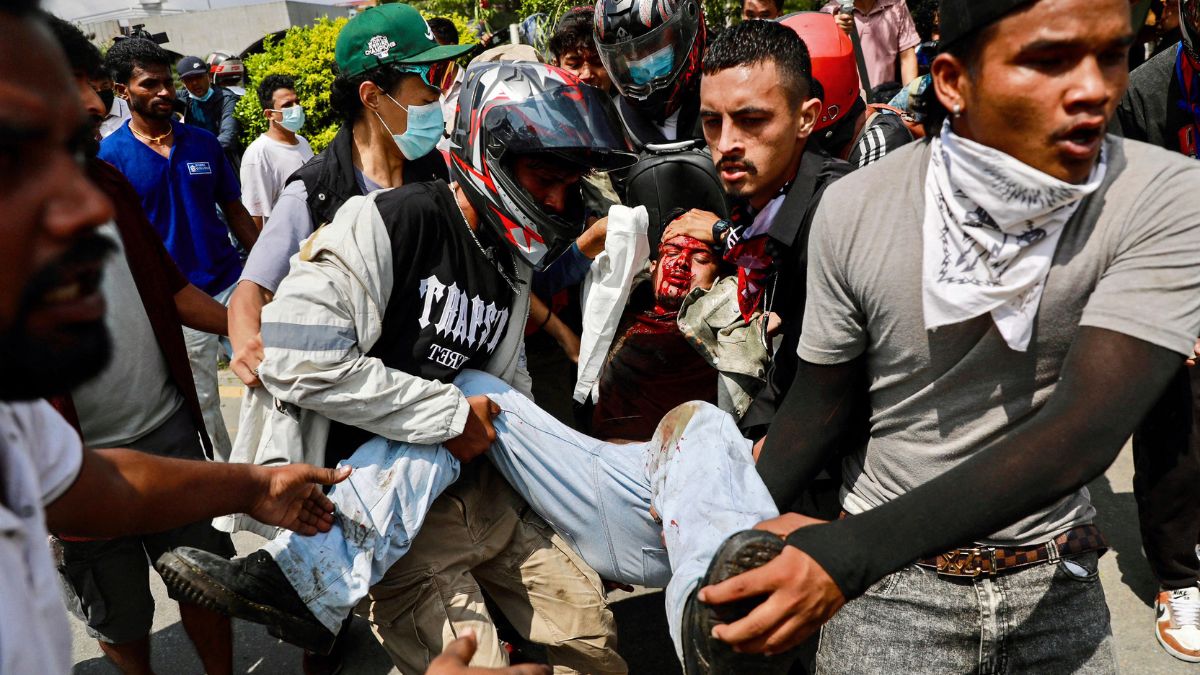Protest's Genesis Unveiled
The protests in Kathmandu, initiated and led by Nepal's Gen Z, have become a focal point of concern. The heart of the matter lies in several interconnected
factors, including, but not limited to, governance issues, economic hardship, and social inequalities. The youth, having grown up in a time of rapid technological and societal change, are now demanding a transparent and accountable system, one that accurately reflects their aspirations and addresses their grievances. The protesters' anger is fueled by what they see as corruption, lack of opportunity, and a failure of the government to adequately address the needs of its citizens. Their voices, amplified by social media, have ignited a movement that has captured the attention of both local and international observers. Understanding the genesis of these protests requires a deep dive into the socio-political landscape of Nepal, one that carefully analyses the root causes of discontent.
Youth's Core Grievances
The protesters' list of grievances is extensive. It encompasses various concerns, ranging from political instability to corruption and a lack of opportunities. The youth are demanding a shift from the status quo, seeking transparency, accountability, and better governance. They argue that political leaders are out of touch with their needs and that the current system is not serving the interests of the people. Economic hardship, including high unemployment rates and rising inflation, has also amplified their discontent. The protesters also express frustration with social inequalities, including discrimination based on caste, ethnicity, and gender. Furthermore, they feel the government's handling of various issues, such as the management of public resources and the protection of human rights, has been inadequate. The youth are actively using social media platforms to amplify their voices and bring their concerns to the forefront. This digital activism is a testament to the evolving nature of political participation.
India's Strategic Perspective
India's role in relation to the Nepal Gen Z protests is complex. It is essential to analyze India's perspective, considering that the two nations share a long history and close ties. Given their geographic proximity and economic interdependence, India has a considerable interest in the political stability and economic prosperity of Nepal. India's response to the protests will likely be influenced by its foreign policy goals, regional dynamics, and the need to balance various interests. India may have a dual approach, aiming to protect its interests while also supporting democratic values and good governance in Nepal. The response from India will be carefully assessed, and any missteps could have far-reaching consequences for bilateral ties and regional stability. The situation in Nepal presents both opportunities and challenges for India. India has historically been a key ally of Nepal, and it has a significant role to play in the evolution of the situation.
Opposition's Stance Assessed
The political opposition in Nepal has a vital role in this ongoing crisis. Their stance on the protests, and how they choose to react, will significantly shape the situation. The opposition parties have a range of viewpoints, with some aligning themselves with the protesters' demands, while others remain more cautious, emphasizing the need for stability and compromise. Some opposition parties may use the protests to gain political leverage, seeking to challenge the ruling government and push for early elections or policy changes. The response of the opposition will also be influenced by their existing political alliances, their individual party platforms, and the potential impact on their electoral prospects. As the situation unfolds, the role and actions of the political opposition will remain under close scrutiny. Their ability to formulate a unified and coherent approach could be critical in navigating the path forward, potentially influencing the direction of the ongoing protests and the future of Nepal's political landscape.
Possible Outcomes Explored
The ultimate outcomes of the Nepal Gen Z protests remain uncertain. Several scenarios could potentially unfold, ranging from a peaceful resolution to increased instability. One possible outcome is that the government might heed the protesters' demands, implement reforms, and address their grievances. This could lead to a more inclusive and accountable governance structure. Another possibility is that the protests could escalate, leading to increased violence and unrest, potentially resulting in political instability. This may result in prolonged civil unrest or even regime change. The role of external actors, including India, in shaping the outcomes is also significant. The dynamics of the protests, the responses from the government and opposition, and any external influences will all play important roles in determining the future of Nepal. The path forward will require dialogue, compromise, and a commitment from all sides to find a solution that addresses the needs and aspirations of the people.















